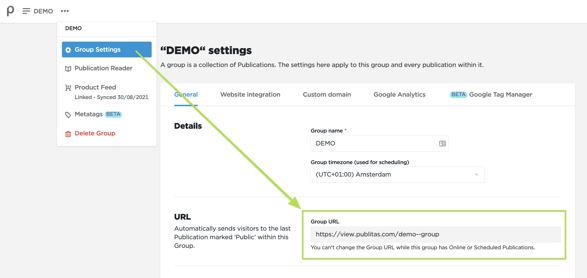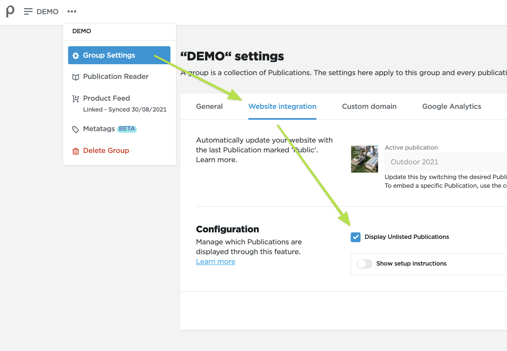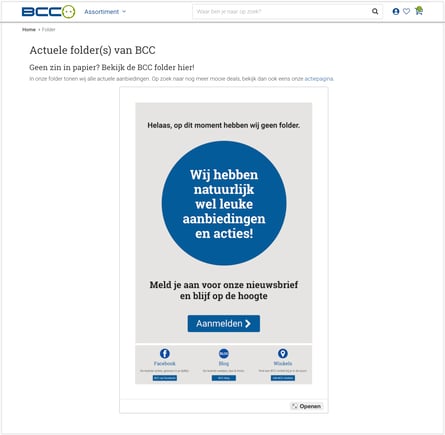Sharing a link that loads the latest publication automatically
When you’ve just published a new publication, there’s a good chance you’ll want to share it on several different channels. This usually includes updating links where your previous publication is displayed. For example, you might have a link on your website, in your email newsletters, or on your Facebook Page. Updating those links manually can be quite a hassle. Be sure to read on as we demonstrate how you can always link to your latest public publication using the Group URL and how you can use that to automatically update the key pages where your publication is displayed.
In this article:
- How to find the Group URL
- What’s my latest public publication?
- How to change your latest public publication
- Using Unlisted publications in group URL
- What about scheduled publications?
- Common uses for the Group URL
- Some final things to consider
WARNING:
We recommend that you always keep at least one publication public when
using the Group URL to ensure there’s something to show
How to find the Group URL
You can find the Group URL at your group's settings. Click on the three dots ••• next to the group name at the top left corner, select Group Settings and you'll see the group URL under the URL section there.

Whenever anyone visits the Group URL, they’ll get to see the latest public publication from that group. Let’s have a look to see how this works.
What’s my latest public publication?
Whenever you switch a publication from Offline to Public, that publication is from that moment considered the latest public publication and it is shown on the Group URL. It doesn’t matter when this publication was uploaded or if there are newer publications already public.
For example, if you upload your Summer 2021 publication and you mark it Public, whenever someone now visits your Group URL, they’ll be redirected to your Summer 2021 publication.
How to change your latest public publication
As the Group URL will point to the publication that was made Public most recently you can also have an older publication shown in the Group URL.
To do so, you only have to change the status of the older publication to Public. If that publication was already public you can briefly switch it to Offline and then back to Public. As of that moment, the publication takes the spotlight and appears when you visit the Group URL.
Using Unlisted publications in group URL
If you want to show Unlisted publications via the Group URL as well, make sure to enable this option in the Website integration tab of the group's settings:

What about scheduled publications?
Whenever you’ve scheduled a publication to go public, the moment the scheduled date is met and the publication is switched to Public, that publication is considered the latest public publication. This is useful because it allows you to automatically distribute your publication to any place where you’re using the Group URL.
Common uses for the Group URL
To give you some ideas on where the Group URL can come in handy, here’s a list of common uses for the Group URL:
In the footer of your website
If you’ve added a link for your publication in the footer of your website, consider using the Group URL instead of the Publication URL. This way, whenever you mark a new publication public, you won’t have to update the link in the footer of your website. It will always automatically redirect to your latest public publication.

In the footer of your email newsletters
The same use of the Group URL in the footer of your website can also be applied for the footers of your email newsletters. The Group URL is especially useful here since the email template is often harder to change.
Using the Group URL in the embed code
Instead of embedding a specific publication, you can also create an embed code that uses your Group URL. Click on the three dots ••• next to the group name at the top left corner, select Settings, go to the Website integration and click on 'Show setup instructions' tab to find the embed code using the Group URL. Click here to read more.
Banners
If you’re using banners to link to your publications, it can be useful to use the Group URL instead of the default Publication URL. This is a great way to ensure your banners always link to your latest public publication.
Redirect offline publications to your latest public publication
Some of our customers redirect their offline publications to their Group URL. This way, when a visitor views one of their offline publications, they are automatically sent to their latest public publication instead.
To set this up, you can use another feature in Publitas called Offline redirect URL. The Offline redirect URL is automatically opened whenever a visitor tries to visit a publication that’s currently offline. You can change the Offline redirect in the group's settings menu (••• -> Settings).
Using the Group URL in your Mobile app
If you have your publication embedded in your mobile app, we advise you to use the Group URL instead of the Publication URL. It’s a lot easier to automatically link to your latest publication instead of updating your mobile app for each new version of your publication.
Some final things to consider
We recommend that you always keep at least one publication public when using the Group URL to ensure there’s something to show. If you don’t have any online publications, the Group URL will automatically call your Offline Redirect URL (found in the Group Settings).
If the Offline Redirect URL is not set, the Group URL will show “Oops, this publication was not found.”
Using a placeholder publication for your Group URL
If you're using the Group URL as the offline redirect URL and no publications are public, the internet browser will get stuck in an infinite loop of redirecting when someone tries to load an offline publication URL.
To avoid this you can create and publish a placeholder or backup publication for when all other publications are offline and there are no new publications available to publish. This way, whenever someone visits the Group URL, they will at least get to see the placeholder publication.
Example:
